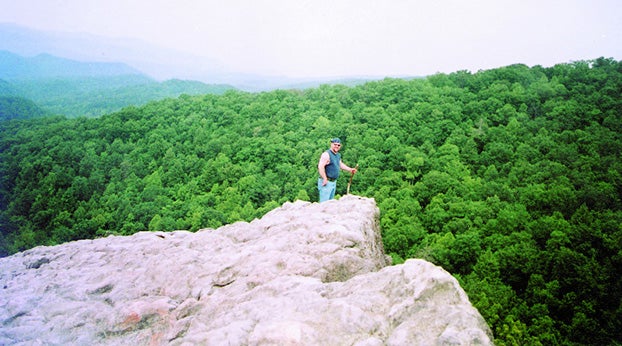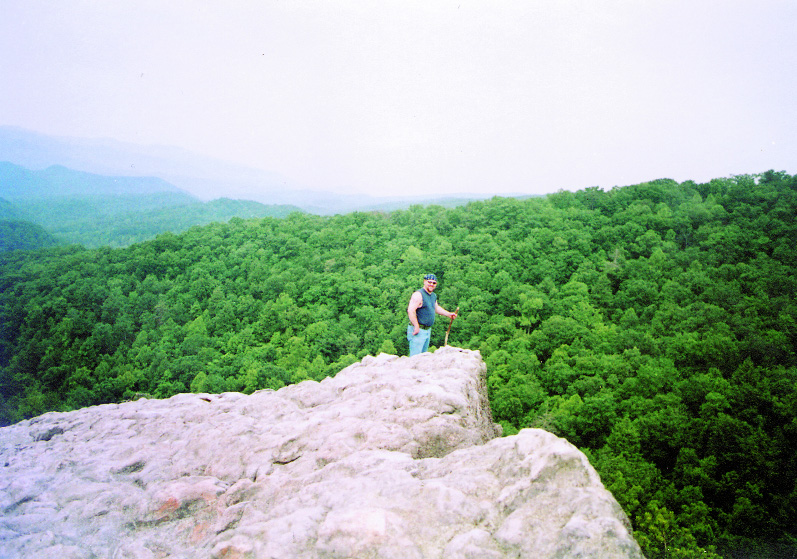INSIDER GUIDE 2021
Explore the outdoors in Blanton ForestPublished 9:19 am Wednesday, September 29, 2021

- A hiker enjoys the view from Knobby Rock in Blanton Forest.
|
Getting your Trinity Audio player ready...
|

Located in Harlan County with approximately 3,510 acres, the Blanton Forest State Nature Preserve is open to the public year-round during daylight hours and is limited to foot travel only.
Purchased with assistance from the Kentucky Natural Lands Trust, Kentucky Heritage Land Conservation Fund, U.S. Environmental Protection Agency, and KSNPC, on Sept. 15, 1995, 1,075 acres of the south face of Pine Mountain were dedicated, protecting half of the largest old-growth forest in Kentucky.
A trail system approximately 4.5 miles in length is open for public use. The main trail consists of two loops leading to points of interest on the south face of Pine Mountain. The first loop is a moderately strenuous trail leading to a large sandstone rock outcrop known as Knobby Rock.
From Knobby Rock, visitors gain a spectacular bird’s-eye view of the surrounding forest. The more strenuous loop to Sand Cave and the Maze takes visitors higher into the Watts Creek and Big Branch watersheds. Depending on the time of year, visitors can expect to see a wide range of wildlife and plant species within the largest old-growth forest in the Commonwealth. In addition, a shorter half-mile trail leading along Watts Creek offers a scenic but less strenuous alternative route to enjoy the preserve.
The preserve has grown with additions in 1996, 1999, 2001, 2003, 2004, 2005,2007, and 2014. Its first addition on the north face was dedicated in December 2007. Today, Blanton Forest State Nature Preserve protects 3,510 acres of old-growth and second-growth forests. As one of 13 large old-growth tracts remaining in the eastern United States, Blanton Forest is a diverse ecological treasure.
Many of the trees are 3 feet to 4 feet in diameter, towering 100 feet above the forest floor. Several trees have been dated to the late 1600s. Blanton Forest contains several forest communities, including mountaintop wetlands known as acid seeps and mixed-mesophytic deciduous forests. Many tree species such as sugar maple, tulip poplar, various oaks, hemlocks, beech, and several magnolias make up the forest canopy.
Designated parking is available in a lot adjacent to Camp Blanton, a private facility. A kiosk and signs direct visitors to the trailhead. The preserve is open year-round during daylight hours and is limited to foot travel only.
Efforts are underway to protect more of Blanton Forest.





